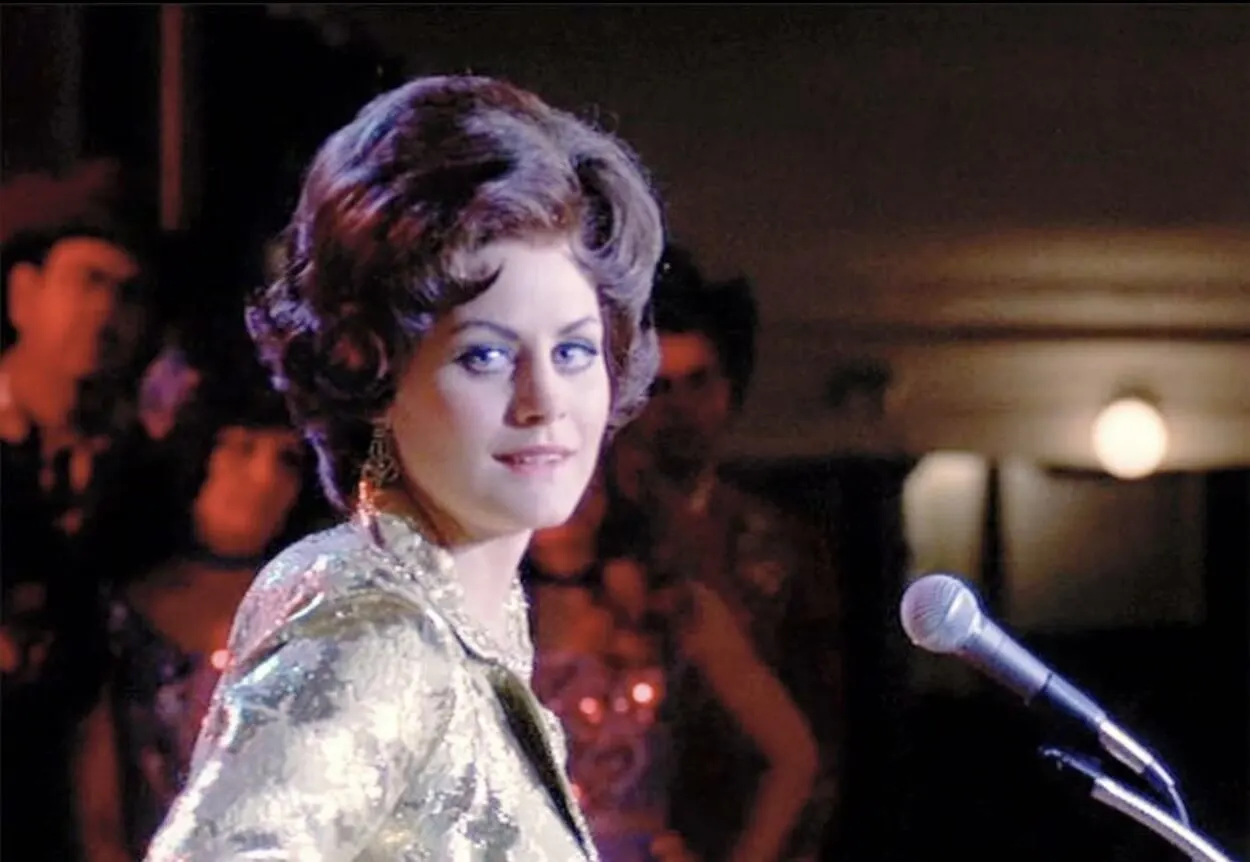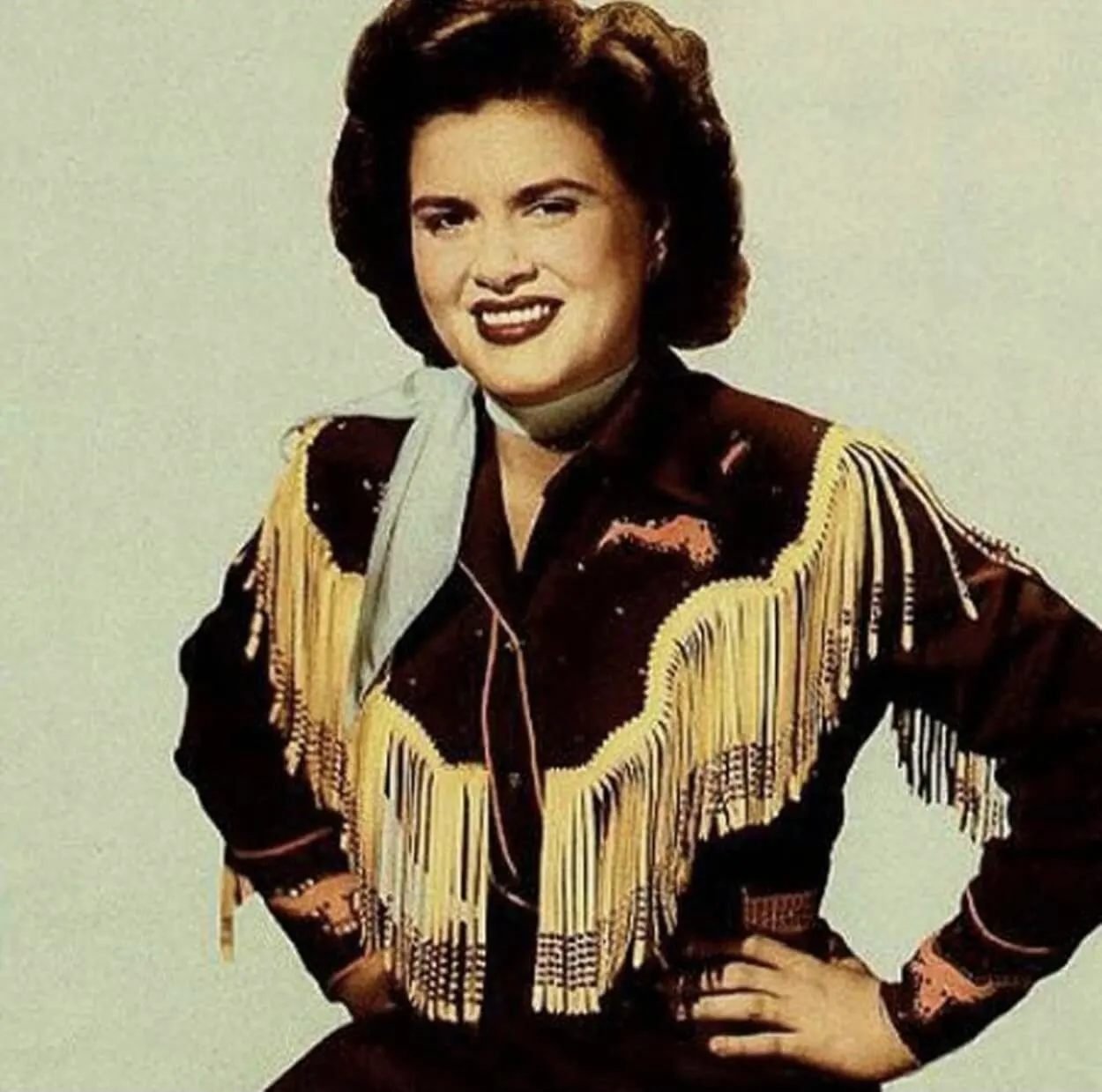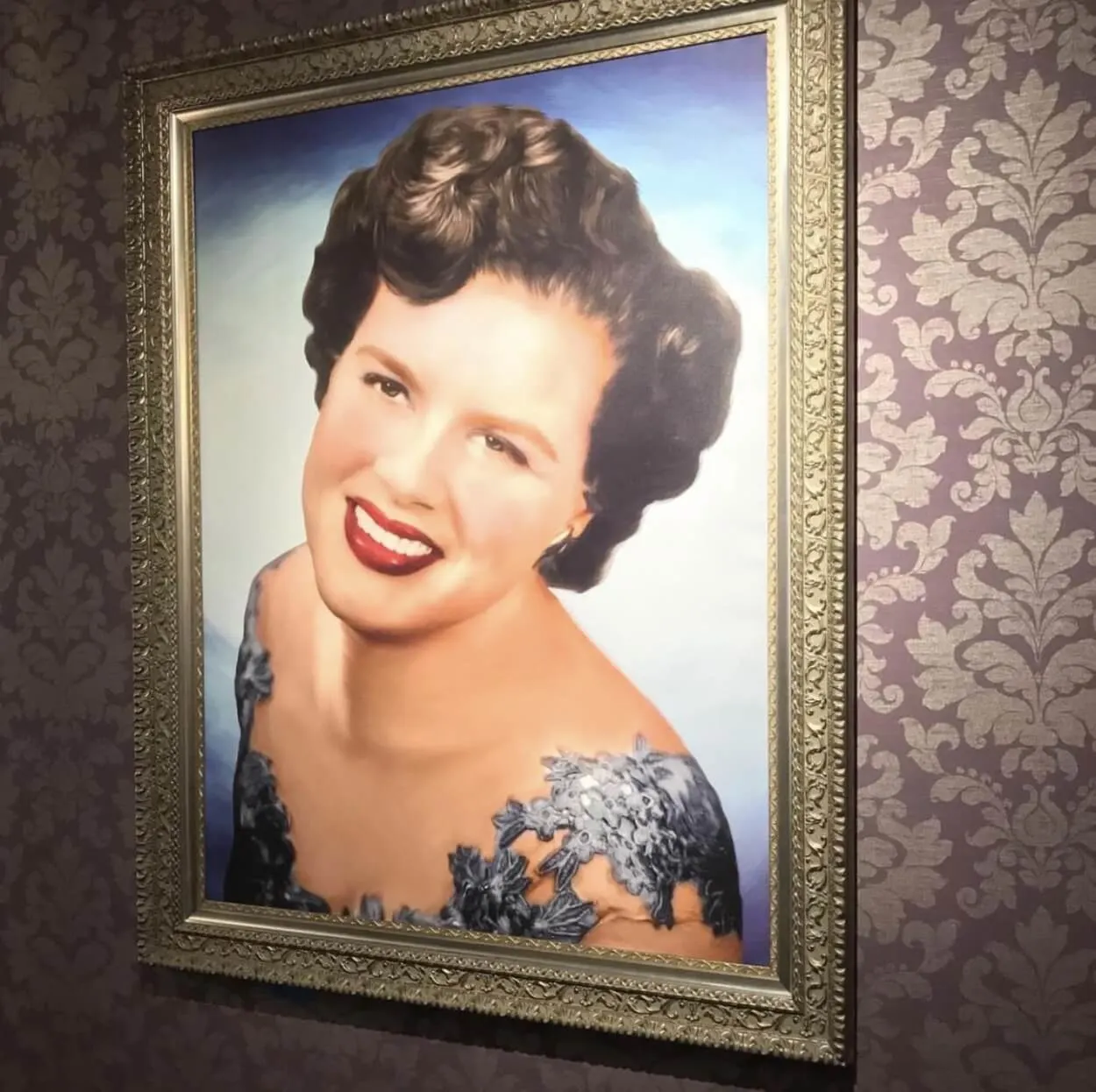Renowned for her timeless hits and powerful voice, Virginia Patterson Hensley, popularly known as Patsy Cline, is a famous figure in the country music industry.
However, an aeroplane mishap that cruelly claimed her life altered the music business forever.
Join us as we explore her life’s journey and learn the specifics of her demise.
Early Life
Cline was born on September 8, 1932, in a hospital in Winchester as Virginia Patterson Hensley. Her parents, forty-three-year-old blacksmith Samuel Lawrence Hensley and sixteen-year-old Hilda Virginia Patterson Hensley, were married six days before the baby was born.
Up until 1937, Hensley resided in Gore, a small town in Frederick County, with her maternal grandparents, then in the vicinity of Elkton, on her paternal grandparents’ farm.
Over the course of sixteen years, the Hensley family moved nineteen times, first to Lexington and then to other villages in the Shenandoah Valley. They also resided in Portsmouth during World War II.
They had returned to Winchester by the time Samuel Hensley left his wife and three children behind in 1948. Hensley began working to support her family shortly after turning sixteen, leaving behind her education.
She began her career in a chicken factory and later worked as a soda cashier in a bus depot and a drugstore. She began giving nightly and weekend professional vocal performances to supplement her mother’s earnings from sewing.
How Did Virginia Get The Name Of Patsy Cline
Over the next few years, Hensley sang with a number of bands, took first place in amateur competitions, and sang popular standards as well as country and western tunes on local radio stations.
She travelled to Nashville to audition for the Grand Ole Opry, but was turned down because of her age. In September 1952, Hensley applied to be on a radio programme that country music performer Clarence William “Bill” Peer held on a station in Martinsburg, West Virginia.
Having seen her perform, Peer decided to give her the stage name Patsy and hired her full-time to sing on the music circuit in Maryland, Northern Virginia, and Washington with his Melody Boys and Girls.

The Turning Point In Her Career
When Patsy Cline’s captivating performance of “Walkin’ After Midnight” won her a TV talent competition in 1957, her career took a completely different turn.
Decca Records promptly released it as a single, giving her a taste of her first taste of fame.
But as her personal life changed—she became a mother and married Linotype operator Charlie Dick—her career took a bad turn, so she moved to Nashville in an effort to make a fresh start.
After making this change, her career peaked and was characterised by collaborations with well-known songwriters, a new label, and new management.
Her ability to effortlessly blend genres allowed her to transcend national boundaries, as seen by The Jordanaires’ support on the 1961 hit song “I Fall to Pieces,” which led to comparisons to Elvis Presley.
Surprisingly, Cline returned to the Grand Ole Opry stage six weeks after suffering injuries and spending a month in the hospital after a near-fatal car accident during the rise of ‘I Fall to Pieces’.
In the same year, she recorded “Crazy” by Willie Nelson, solidifying her place as a prominent player in the country music industry.
The public was primed for Patsy Cline’s 1973 posthumous entrance into the Country Music Hall of Fame, which confirmed her enduring influence on the genre, thanks to this prosperous period of her career.

The Secret To Patsy’s Music
The secret to Cline’s brilliance was the depth of passion she poured into her songs; the lines of loss, resentment, and anguish were all there in every swing and tone of her voice.
While it’s plausible that some of Cline’s personal hardships had an impact on her vocals, skill also had a role.

Hit Songs
| Song | Year |
| “Walkin’ After Midnight” | 1957 |
| “I Fall to Pieces” | 1961 |
| “Crazy” | 1961 |
| “She’s Got You” | 1962 |
| “Sweet Dreams” | 196 |
She Almost Died In A Car Accident
The singer’s career nearly ended on June 14, 1961, when she and her brother Sam were engaged in a horrifying head-on collision in Nashville that sent Cline flying through the windscreen.
Among other injuries, Cline suffered a shattered wrist, a dislocated hip, and a deep gash across her forehead that required stitches. She was hospitalised for more than 30 days.
Cline was so focused on advancing her profession that she soon went back to the Grand Ole Opry stage, even performing while using crutches.
The Tragic Death Story
Cline believed in fate, she was not scared, as she knew that when it’s time for her to leave this work she would.
Just like that, one day, Cline died in an aeroplane crash on March 3, 1963, while returning home from a run of benefit concerts for DJ Jack ‘Cactus’ Call’s family that were staged in Kansas City’s Soldiers and Sailors Memorial Hall.
Together with other country music legends Hawkshaw Hawkins and Cowboy Copas. According to rumours, she was aware of the bad weather.
She declined the offer of fellow country music artist Dottie West to drive back to Nashville. She told him not to be concerned about her. She will leave when it’s time to.
Thousands of her admirers turned out for Patsy’s funeral service before her burial in her hometown of Winchester, Virginia.
Shortly after becoming a single, her song “Sweet Dreams (Of You)” assumed an elegiac character, serving as a fitting homage to one of the greatest country music artists ever.
What Caused The Crash
About six o’clock in the evening, her manager Randy Huges, flying the aircraft, made a stop in Dyersburg, Tennessee, to refuel.
The sound of a low-flying aircraft was heard shortly after by a witness, and by 6:29 p.m., the plane had crashed close to Camden, Tennessee.
Poor flying circumstances combined with inexperienced piloting remain the primary reason of the crash to this day.
Patsy Left Behind Her Family
At the time of her death, Cline was just thirty years old. She left behind her two children, Randy, who was two years old, and Julie, who was four, as well as her husband Charlie Dick.
Success After Death
- In the decades that followed her passing, Patsy Cline became an iconic figure.
- She was inducted into the Nashville-based Country Music Hall of Fame as the first-ever solo female singer in 1973.
- She was admitted into the Virginia Country Music Hall of Fame by the Virginia Folk Music Association in 1981.
- She received a Lifetime Achievement Award from the National Academy of Recording Arts and Sciences in 1995.
- won the Grammy Hall of Fame in 1992 and 2001 for the songs “I Fall to Pieces” (recorded in 1960, released in 1961) and “Crazy” (1961).
- the subject of multiple biographical pieces, musicals, tribute albums, and the 1985 feature film Sweet Dreams.
- When the twentieth century came to a close, “Crazy” was still the song that jukeboxes played the most.
- Despite never having been in a film, she received a commemorative postage stamp from the United States and a star on the Hollywood Walk of Fame.
- The Patsy Cline Memorial Highway (Route 522) and Patsy Cline Boulevard are among the memorials in Winchester, along with a bell tower in Shenandoah Memorial Park and an annual Labour Day event.
- Her distinctive voice and heartfelt interpretations of lyrics have influenced many vocalists throughout the years, such as Dolly Parton, Linda Ronstadt, Loretta Lynn, and K. D. Lang.

Conclusion
- Patsy Cline, whose real name was Virginia Patterson Hensley, was a legendary country music performer whose hits endured a lifetime.
- Despite a number of personal hardships, such as a difficult upbringing and multiple moves, Cline’s musical ability was discovered via her appearances on neighbourhood radio programmes and in bands.
- Her first taste of fame occurred in 1957 after she won a TV talent show with her song “Walkin’ After Midnight,” which marked a turning point in her career.
- Following her move to Nashville, Cline’s career peaked with new label representation, record label changes, and partnerships with well-known composers.
- In 1961, tragedy struck when Cline barely escaped a near-fatal vehicle accident and astonishingly made a triumphant comeback to the Grand Ole Opry stage, showcasing her tenacity.
- Patsy Cline’s tragic death on March 3, 1963, in an aircraft crash, remains a sombre episode in the history of music, leaving a long-lasting effect.
- Poor flying conditions and inexperienced piloting were the cause of the disaster, which killed Cline, her manager Randy Hughes, and musicians Cowboy Copas and Hawkshaw Hawkins.
- Patsy Cline’s posthumous achievements include Grammy Hall of Fame recognition for her timeless melodies, entry into the Country Music Hall of Fame, and a Lifetime Achievement Award.
- She has fan clubs all around the world, a commemorative postage stamp in the United States, a star on the Hollywood Walk of Fame, and her influence goes beyond music.
- Her memory is honoured by memorials in Winchester, including the Patsy Cline Memorial Highway and an annual Labour Day celebration.
- Cline’s timeless voice has inspired countless vocalists over the years, securing her status as one of the finest country music performers of all time.
